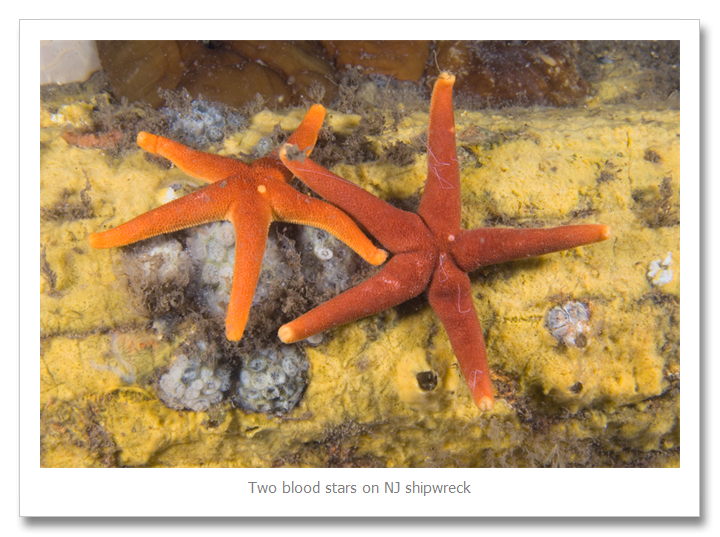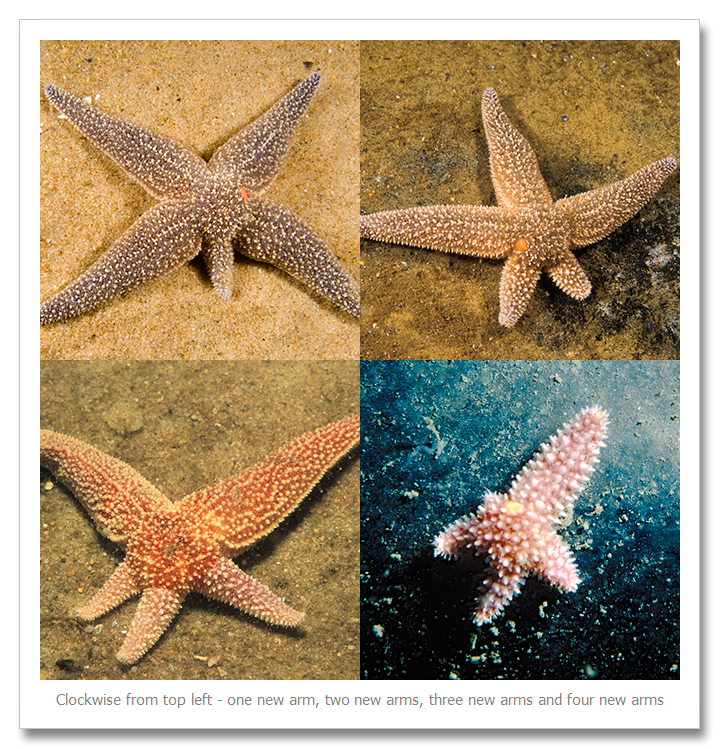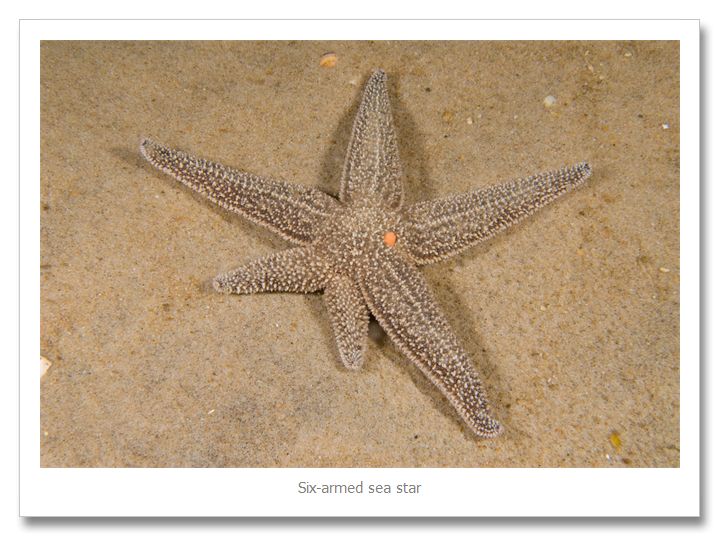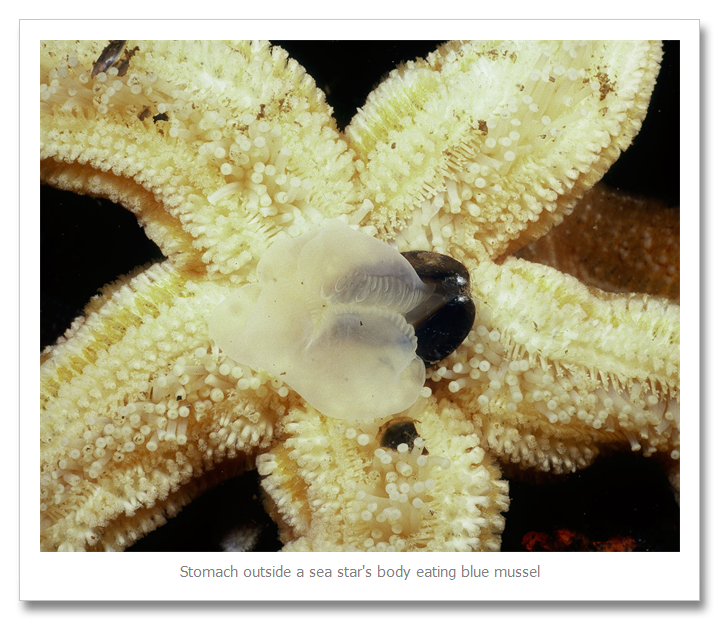One of the wonderful aspects of underwater photography is learning about the subjects that I photograph. I truly believe that to become a better photographer, it is imperative to learn about your subjects. It allows you to look for unusual (or usual) behaviors that you would not know about without research. A favorite subject of mine is sea stars. In New Jersey, we have three species – blood stars, Forbes sea stars and northern sea stars. The blood star, Henricia sanguinolenta, is a little out of their range in New Jersey. I see them more often in New England. In New Jersey, I have found them north of Shark River Inlet but have also seen them in videos from deep water dives in mid and south Jersey.

An interesting thing about blood stars is that their red color is not seen as red to the naked eye underwater. Color is filtered out of the water column as a diver descends. The first color lost is red. At depths deeper than 10’, red looks very dark, almost black. The red color shows when using an underwater light or an underwater camera flash.
The more common species of sea stars in New Jersey are the Forbes sea star, Asterias forbesi and the northern sea star, Asterias vulgaris. They can be difficult to tell apart. The easy way is to look at a little round spot on the top of their bodies called a madreporite.

The madreporite is an opening on the body of the animal used to filter water into the water vascular system of sea stars. On Forbes sea stars, the madreporite is orange colored and it is yellow colored on northern sea stars.
There are two things that fascinate me about sea stars. First, if they lose an arm or if they are chopped into pieces, they can regenerate new arms. I believe that as long as an arm and a part of the center disk remain, they can grow into a new starfish. I have seen sea stars with one arm, three arms, four arms, five arms and six arms. I have not seen a sea star with two arms. I don’t know why – I just haven’t.

I also wondered when this regeneration starts in the life of a sea star. The photo bottom right above is of a tiny sea star, probably 1” wide. It was growing four new arms. They can obviously do this all their lives. That is cool. Every once in awhile, I see a confused sea star. They are supposed to have five arms. The one below must have lost count when growing new arms.

The second thing that I find fascinating about sea stars is how they eat. Their favorite food is blue mussels. When a sea star finds a meal, it parks over the mussel and uses the tube feet on the underside of its body to attach to the muscle shell and then uses its powerful arms to pull the shell open. I often wondered, “that all sounds great but how do they actually eat the mussel meat?” Their method of eating is really cool. They can push their stomachs out of the body to eat the mussel meat and then retract them back. I turned one over to observe.

The sea star’s stomach is outside it’s body and it is eating the meat of the blue mussel. When it is done, it will retract back into the body. After taking the photograph, I turned the starfish over and put it back where I got it from.
The inhabitants of the ocean amaze me constantly. This amazement feeds my desire to learn more and more about them.
If you have not purchased my book, Beneath The Garden State—Exploring Aquatic New Jersey, please consider it. It is full of images and information about the marine environment off the coast of New Jersey.
© 2014, Herb Segars. All rights reserved.


1 thought on “The Amazing Sea Star”